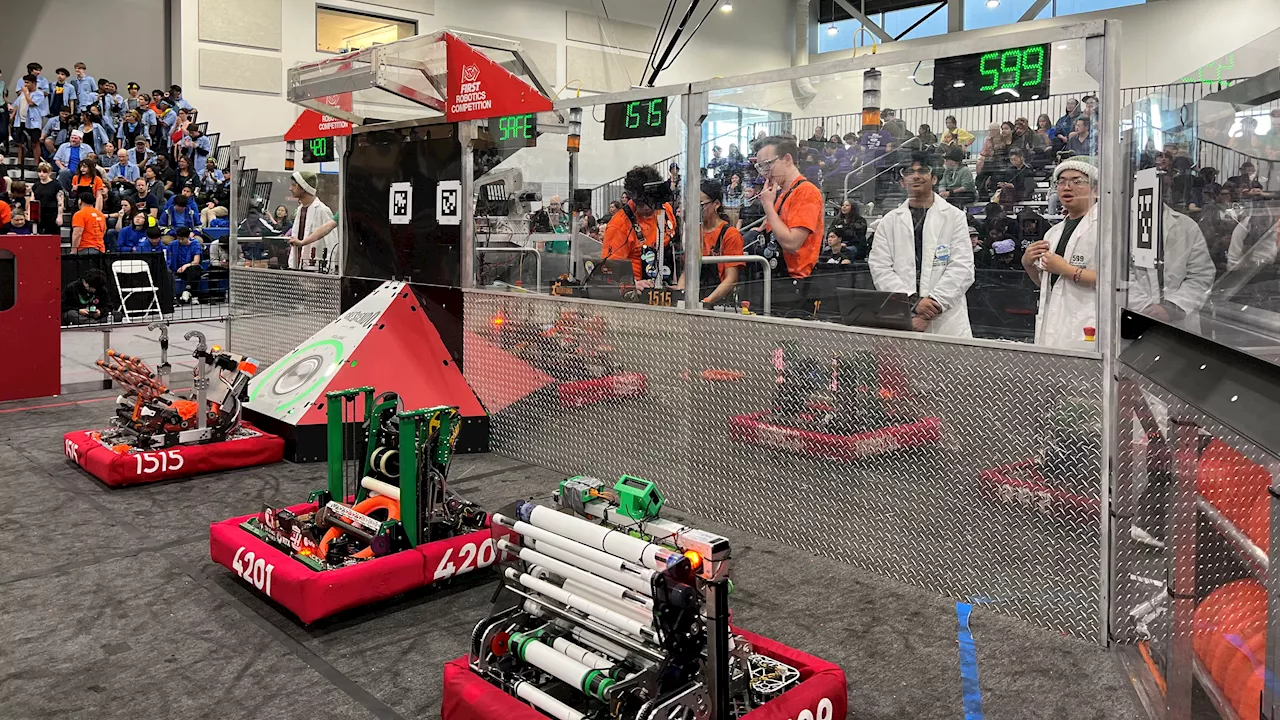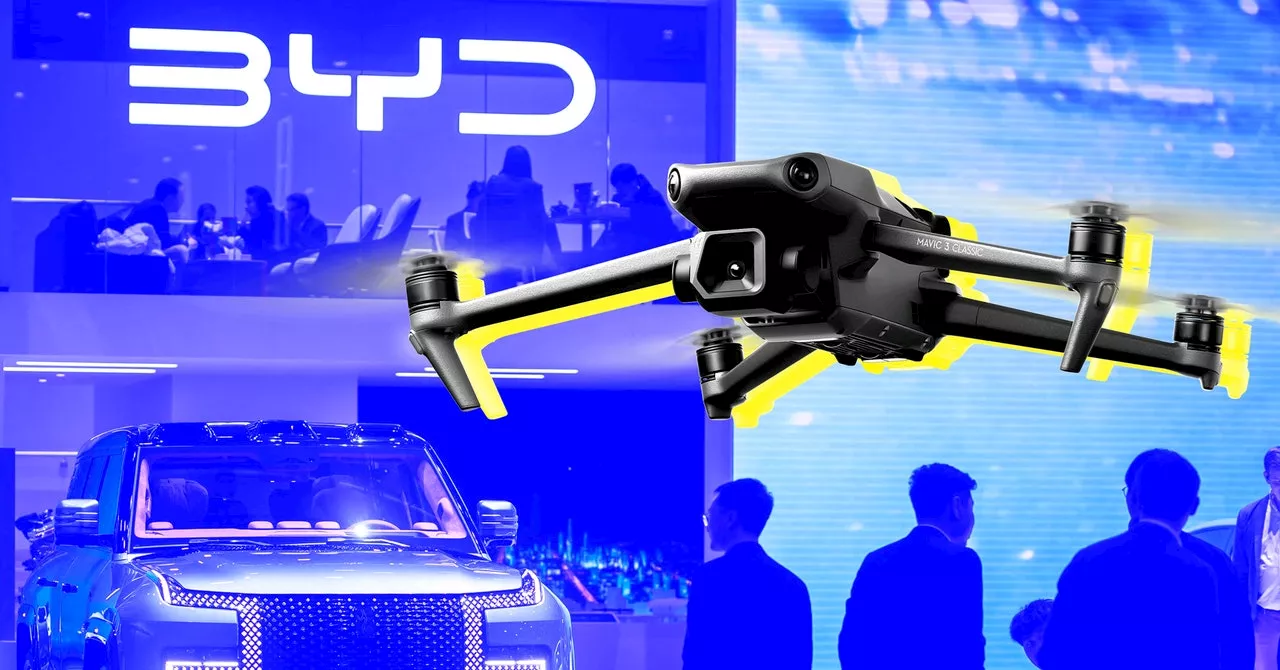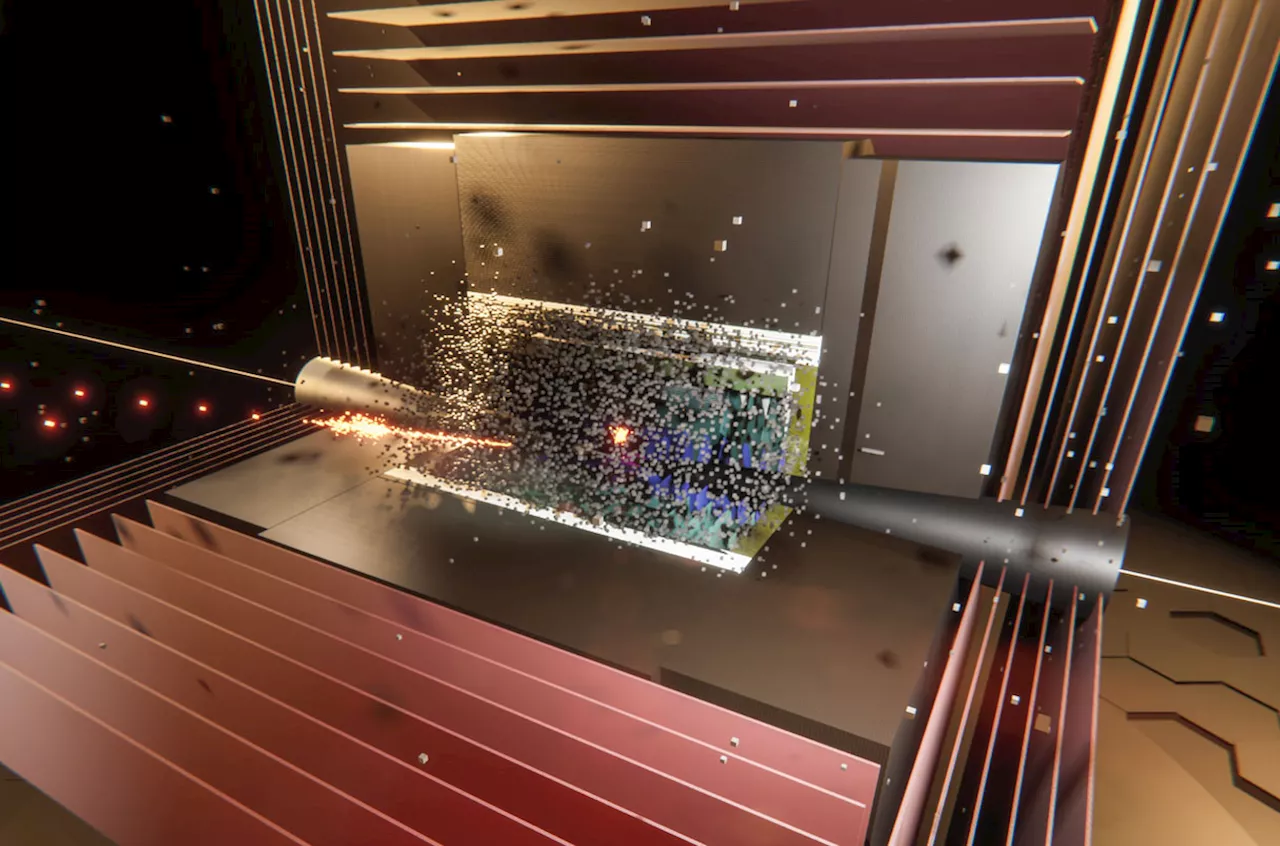The radical new machine might be built faster and cost less than an equivalent conventional atom smasher, boosters say
Colliding muon beams generate a muon and an electron—possible signals of a Higgs boson decay—amid copious background particles in a simulation.Young people supposedly enjoy the luxury of time, but perhaps not if they’re particle physicists. For decades, physicists have peered into the universe’s inner workings by smashing subatomic particles together at ever higher energies. But the next highest energy collider may not be built for 50 years.
Nevertheless, some physicists, especially in the U.S., are eager to tackle the task. In December 2023, a federal advisory subcommittee called the Particle Physics Project Prioritization Panel laid outThe P5 report calls for R&D on a muon collider, stating, “This is our muon shot.” But what exactly are physicists shooting for and what obstacles must they overcome to realize their dream machine?, energy equals mass.
That discovery neatly completed the standard model but left physicists vexed. The theory has obvious shortcomings—for example, it doesn’t include dark matter, the mysterious stuff thought to make up 85% of the universe’s matter. Researchers hoped the LHC would cough up other new particles that would lead to a deeper understanding. But so far, it has turned up nothing more.
Sifting through the shards. A pair of massive particle detectors would look for new particles produced in the muon collisions and instantly decaying into more familiar ones. Each detector would comprise the usual subsystems, but would also possess special shields to tamp down the radiation emanating from the muon beams.
But why does the Higgs field persist? The standard model assumes the field interacts with itself in a particular way that ensures its energy is lowest when, instead of vanishing, it has some nonzero strength. But nobody knows whether that assumption is right, says Nathaniel Craig, a theorist at UC Santa Barbara. “We know the Higgs field has this background value everywhere in space, but we don’t really know why.”.
The muons would emerge in a cloud centimeters wide. To herd them into a beam a few micrometers across, they would pass through a low-density material such as lithium hydride or liquid hydrogen. Still swirling in a horizontal magnetic field, the muons would ionize atoms in the material, dissipating energy and quelling their buzzing about. An RF cavity would accelerate the muons into the next cooling cell. That could be tricky, because RF cavities typically don’t work well in magnetic fields.
Physicists will have to shield the machinery from the electrons and positrons gushing from the beams as the muons decay. Doing so is especially complicated in the detectors, as physicists must take care not to block the particles they want to observe—those coming from the muon collisions. To deal with the extraneous decay particles, a cone of tungsten would surround the beam pipe on either side of the collision point in each detector.
United States Latest News, United States Headlines
Similar News:You can also read news stories similar to this one that we have collected from other news sources.
 Student-Built Robots Clash at Competition Supported by NASA-JPLHand-crafted robots, constructed over the past two months by 44 high school teams, duked it out at the FIRST Robotics Los Angeles regional competition.
Student-Built Robots Clash at Competition Supported by NASA-JPLHand-crafted robots, constructed over the past two months by 44 high school teams, duked it out at the FIRST Robotics Los Angeles regional competition.
Read more »
 This Off-Road Dodge Viper Is The Most American Safari Machine Ever BuiltCall this wild build whatever you want, overcoming the challenges to make it a reality are noteworthy and admirable
This Off-Road Dodge Viper Is The Most American Safari Machine Ever BuiltCall this wild build whatever you want, overcoming the challenges to make it a reality are noteworthy and admirable
Read more »
![]() Electric Vehicles in China Now Come With Built-In Camera DronesCar manufacturers in China are installing drones in EVs to woo customers by allowing them to get cool shots of themselves driving their cars.
Electric Vehicles in China Now Come With Built-In Camera DronesCar manufacturers in China are installing drones in EVs to woo customers by allowing them to get cool shots of themselves driving their cars.
Read more »
 EVs With Built-In Camera Drones Have Already Landed in ChinaStill the stuff of concepts and flights of fancy in the West, automakers on the other side of the world are putting copters in their cars.
EVs With Built-In Camera Drones Have Already Landed in ChinaStill the stuff of concepts and flights of fancy in the West, automakers on the other side of the world are putting copters in their cars.
Read more »
 Built to Move: Can you pass a mobility test?6484. Built to Move: Can You Pass a Mobility Test?
Built to Move: Can you pass a mobility test?6484. Built to Move: Can You Pass a Mobility Test?
Read more »
 How a Moorestown collector saved, secured a loan, and built an Andy Warhol collection worth thousands323 prints of Warhol's Marilyn Monroe were never displayed until being shown at Penn in 2022, thanks to Gregory McCoy.
How a Moorestown collector saved, secured a loan, and built an Andy Warhol collection worth thousands323 prints of Warhol's Marilyn Monroe were never displayed until being shown at Penn in 2022, thanks to Gregory McCoy.
Read more »
